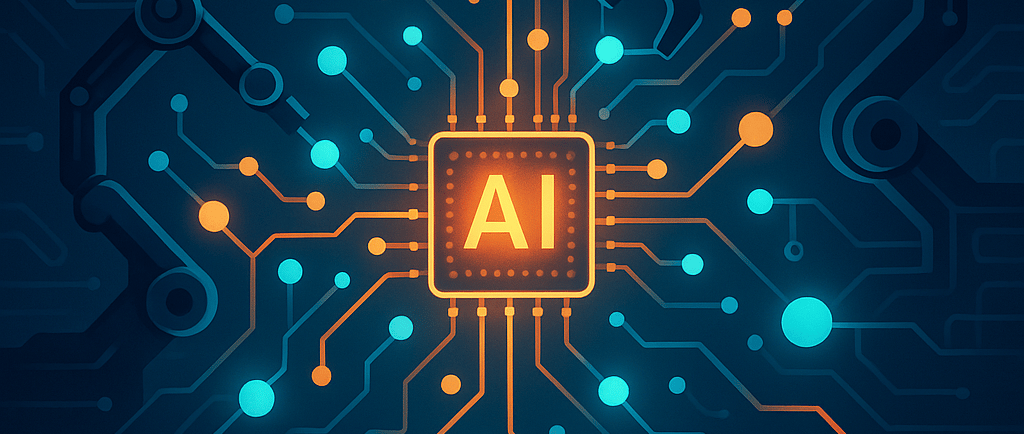
AI Powered Automation and Intelligent Workflows
A Newbie's Gateway to Tech
Shane Brown
6/2/20253 min read


AI-Powered Automation and Intelligent Workflows: A Newbie’s Gateway to Tech
Artificial intelligence is no longer just a futuristic buzzword—it’s the engine quietly transforming how we work, solve problems, and even imagine what’s possible. For anyone curious about technology, AI-powered automation and intelligent workflows offer a fascinating and practical entry point. Whether you’re a total newbie or just looking to level up, exploring how machines can learn, adapt, and handle real-world tasks is a perfect way to catch the tech bug.
What Are AI-Powered Automation and Intelligent Workflows?
Let’s break it down. AI-powered automation combines artificial intelligence with automation tools to tackle tasks that used to require human smarts. Unlike old-school systems that just follow a script, AI automation learns from data, adapts to new situations, and gets better over time. Imagine an AI that sorts your inbox, prioritizes urgent emails, or even predicts what you’ll need next week based on your schedule.
Intelligent workflows take this to the next level. They connect different pieces of software and use AI—like machine learning, natural language processing, and robotic process automation—to manage entire processes from start to finish. Think of a system that not only processes expense reports but also flags anything suspicious by comparing millions of transactions. It’s about making work smarter, not just faster.
Why Should Newbies Care?
If you’re new to tech, these concepts are a great way to see how technology solves real problems. It’s not just about writing code or building apps—it’s about making life easier and more efficient. AI-powered automation isn’t here to replace us; it’s here to help us focus on the creative, challenging, and fun parts of our jobs. When you realize that AI can take care of the boring stuff, it’s hard not to get excited about what else you could automate or improve.
How Does AI Automation Actually Work?
Here’s the typical flow:
Data Ingestion: The AI gathers data from emails, sensors, databases, or even social media. For example, a smart home system might collect temperature and light data to optimize energy use.
Decision-Making: Machine learning models analyze the data and make decisions. Maybe it predicts what supplies you’ll need for a project or flags unusual activity in your codebase.
Execution: Robotic process automation (RPA) bots carry out the actions—updating spreadsheets, sending notifications, or even triggering other automations.
The key tech behind this includes machine learning (for learning from data), natural language processing (for understanding human language), and computer vision (for interpreting images or video).
Real-World Examples That Spark Curiosity
Smart customer service is a great example. AI chatbots handle common questions around the clock, freeing up humans for the trickier stuff. Personalized recommendations are another everyday use—think Netflix or Spotify, where AI suggests what you’ll like next, based on your habits. In healthcare, AI analyzes medical images to help doctors spot issues faster and more accurately. Predictive maintenance in manufacturing lets AI predict when machines need repairs, saving time and money. Banks use AI to catch suspicious transactions instantly. These aren’t just big-company solutions. With the right tools, anyone can build simple automations to make their own life easier.
Tools and Platforms for Beginners
You don’t need to be a coding wizard to get started. There are plenty of no-code and low-code tools that let you build your own automations. Zapier connects your favorite apps to automate tasks like saving email attachments to the cloud. Make (formerly Integromat) lets you visually design workflows for things like social media automation. UiPath is a user-friendly platform for automating repetitive office tasks. If you’re curious, there are tons of online courses, YouTube tutorials, and community forums where you can learn, share, and get inspired.
How to Start Your Own Automation Journey
Spot repetitive tasks—look for things you do every day, like organizing files or sending reminders. Pick a tool and try out a free version of Zapier, Make, or Microsoft Power Automate. Build a simple workflow, such as setting up an automation that saves starred emails to a to-do list. As you get comfortable, experiment with more complex automations and see how much time you can save.
The Future is Bright (and Automated)
With emerging trends like generative AI and quantum computing, the possibilities are only growing. Soon, AI will be able to optimize entire workflows in ways we can’t even imagine today. For anyone just starting out, this is an exciting time to jump in, experiment, and grow alongside the technology.
Nerd Joke of the Day
Why did the AI refuse to play cards with the robot?
Because it was tired of neural nets!
Sources
Moveworks: Business Examples and Uses of AI Automation
TechTarget: Intelligent Workflow
ToolPilot: AI Tools for Business
Nanonets: What is Intelligent Automation?
Make.com: What is AI Automation?
Appian: AI Automation Examples
Reddit: How Do I Start Learning AI Automation?
AI Automation Spot: AI Automation for Beginners
If you want to dive deeper or try building your first workflow, let me know—I’m always up for helping fellow learners get started!
